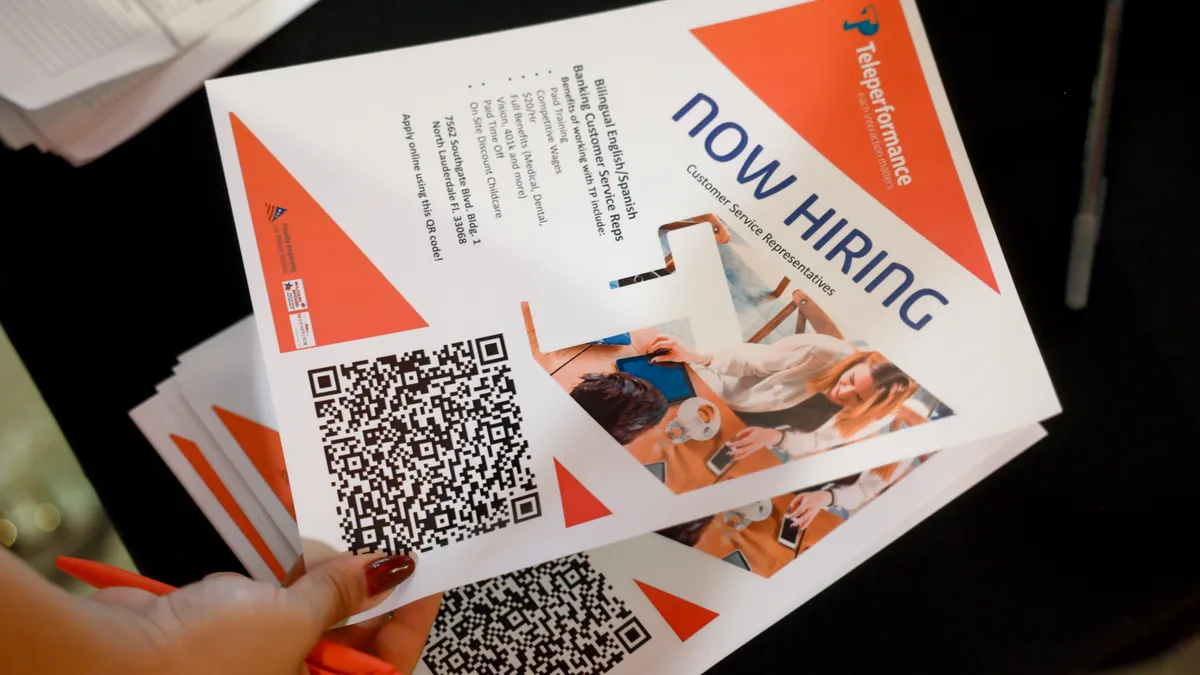Where do you see yourself in five years?
That interview question is so common there are websites that provide candidates with stock answers. But in a business environment where upskilling is a necessity, it may be time to use that age-old question to everyone’s advantage.
Rather than asking candidates, employers may need to ask employees where they see themselves and how the employer can help them achieve their goals.
What are career maps?
Career maps are written plans, outlining where the employee is today, where they want to be, and what steps will be needed to get from here to there. Too many employees simply don’t know what their career path should be. A recent study from LinkedIn calls these staffers "career sleepwalkers," and almost half of American workers age 35 to 44 fall into that category. They may have an abstract idea of how they want to grow, but without a definitive plan, they’re not likely to achieve their goals. LinkedIn calls it a "treadmill going nowhere," and it can result in job dissatisfaction, lower engagement and productivity and potential attrition.
"With the war on talent heating up," Beth Linderbaum, VP, principal consultant at Right Management said, "cultivating a culture that supports career development will be a key differentiator." Today’s employees know their value and their expectations are changing. They’re looking for organizations that invest in their growth. Businesses need "a talent strategy that helps employees take ownership of their career while providing support, development and career paths to keep them engaged," Linderbaum told HR Dive via email.
Who needs a career map?
Attrition has always been costly, but in today’s tight labor market, it can be devastating. Employees on track to grow within the company are more likely to stay with the company. If they don’t see an investment in their future with you, they're likely to look for one elsewhere.
The challenge for employers may be identifying what staff members want and finding a ladder within the organization that helps them get there. For businesses, starting with top performers — those you can’t afford to lose — could be a model that trickles down to all employees. Some employees may even have their own career maps determined; for these staffers, finding a way to align their plan with yours can prevent them from jumping ship.
Opening the lines of communication
"It all begins with listening to employees," Eric Freshour, senior manager in West Monroe Partners’ operations excellence practice, told HR Dive in an email. "Employers need to be open and honest with themselves, asking employees if they understand their path to progression, if they see themselves with the company in three to five years." If an overwhelming majority of responses aren’t positive in this regard, he said, it is quite possible that career paths and clear opportunities for advancement should be more clearly communicated.
Career maps identify three main data points:
- Where the employee is today.
- Where they want to be in six months, one year, five years or any other identified timeline.
- What skills, experience and training is needed to get there.
An employee profile identifies what skills, education, experience and talents they currently possess. Job profiles identify which skills, education, etc. are needed for the goal. With these details in place, it's easy to identify what training, coaching or mentoring the employee will need to make it to the next level.
"I have seen different employers do different things," Freshour said. "They can be in the form of success profiles, outlining attributes and experiences required for promotion, along with quotes from people who’ve made the progression." West Monroe created a play on the Game of Life for their staff called WMPLife. Freshour said it was a fun and engaging way to demonstrate the potential professional milestones one might encounter.
Putting them on the map
Career maps can be developed for individual employees or entire categories of staff. Companies like Walmart often pull their retail management and supply chain staffers from internal candidate pools, and entry-level staffers are often the applicant pool from which they choose. Identified routes to growth are available to employees who are interested, along with access to training and branded development opportunities set to help employees achieve those goals.
Not all employers have an internal university to help guide staff. But from the most entry level employee, to top performers who’ve been on the job for years, individualized maps can boost engagement, productivity and loyalty.
Who helps chart the course?
For individualized maps or even job category maps, managers may be partly responsible for identification of the skills workers have and the skills they each need for the next step. HR and L&D can support with planning and provide access to learning.
"While it is important for employees to take ownership of their career," Linderbaum said, "managers play a pivotal role. Managers don’t just need to provide career tools and training, they need to have coaching skills to have productive career conversations with their people." Leaders at all levels need to be able to play the role of career coach, she added.
But creating a long-term plan without identifying how to track actions taken and successes achieved can make the entire effort futile. Quantify what steps need to be taken and when, where the employee should be after a certain amount of weeks, months and years and follow up routinely to make sure they’ve stayed on the path. Delays and glitches may appear along the way, so routine follow-up will ensure employees get back on track as quickly as possible.
Employers also must pay attention to "specific employee life events that may impact the trajectory," Paul Hagen, senior principal in West Monroe Partners’ customer experience practice, told HR Dive in an email. Personal and professional issues can put the employee off track. He recommends frequent survey tools: "The best companies," he said, "keep a constant and real-time pulse on both customer and employee 'health.'"
X marks the spot
Career maps are not the ladders of the past but rather lattices that weave together experiences that cater to individuals' passions as well as organizational needs, Linderbaum said: "Career maps can include skills needed for the role as well as examples of other roles or experiences that often precede that role in a career journey." In many cases, cross-training can help an employee consider options in different departments and roles in ways they might not have thought possible.
To retain your employees and keep them engaged, finding the "treasure" that helps them realize their career aspirations as they grow within your organization is key. Hagen recommends employers opt for employee feedback and pulse-taking tools to continuously keep abreast of what’s important to them and to communicate how they’re doing.
Finally, employers have to accept the fact that a career map may ultimately lead an employee out your door. Does that mean they’re not worthwhile? Consider whether or not you would have lost that staff member at some point in the future anyway, and whether or not you’ve received the best from them in the interim. If you’ve invested in them and their future, they’re more likely to have given you their all while you had them, and you'll have a happy former employee.





















